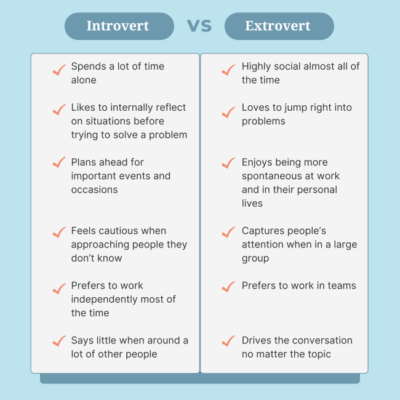First posted on the ORIGINal Thoughts Blog
Erin C. Landis
Managing Director, Origin Editorial
LinkedIn: www.linkedin.com/in/erinlandis
Take Home Points:
I have a vivid memory of my mother reading me the book The Shy Little Girl when I was about five years old. It tells the story of how a young girl overcomes her shyness by becoming friends with a new classmate. As a new kindergartener when she read me that book, my mother understood that I was on the quieter side, a child who preferred to watch and listen instead of leaping headlong into the fray. Over time, that shyness evolved into introversion. As I journeyed through elementary and middle school, I found myself valuing my “alone time” and choosing to have a few close friends over a large social circle. In fact, when I did find myself in social settings with large groups, I’d have to spend time afterward “recharging.” And yet, despite my natural inclination toward reservedness, quiet observation, and small groups, I consistently found myself gravitating toward leadership positions—in group projects at school, sports teams and, ultimately, the workplace. How could this be, I often wondered? How could someone who steadfastly avoided the spotlight always find herself in the spotlight when it came to leading? I wrestled with this cognitive dissonance for many years, especially as my career path unfolded and I found myself leading teams, groups, and committees in various contexts.
I’ll admit that there have been dozens—maybe even hundreds—of times over the course of my career where my leadership positions made me uncomfortable or uneasy, even though, on the whole, scholarly communications seemed to be a good fit for an introvert. There were times when I simply wanted to fade into the background and work from behind the scenes. But those feelings wouldn’t last, and I’d find myself once again pushing past the fears that often plague introverts—public speaking, networking, endless (and break-free) days at conferences, etc. But it wasn’t until I really decided to embrace my introversion and see it as a strength (versus a weakness or something of which to be ashamed) that I finally settled into my own. My goal with this post is to share with you my journey as an introverted leader in the scholarly communications industry, explaining what I’ve found has helped guide me to relative comfort in my leadership roles. Hopefully I can show those who are on the quieter, more reserved side, that leadership is within reach.
But First, a Little Terminology
Most of us are familiar with the terms “introversion” and “extroversion.” And if you were a psychology major in college like me, then likely you know these personality traits were first popularized by Carl Jung, a Swiss psychoanalyst, in the 1920s. A high-level summary of his work on introversion and extroversion posits that extroverts direct their energy outwards—towards other people—and gain energy from these interactions. Introverts, on the other hand, focus their energy inward and enjoy more solitary and thoughtful activities. According to the American Psychological Association (APA), introverts are defined as having an “orientation toward the internal private world of one’s self and one’s inner thoughts and feelings, rather than toward the outer world of people and things…[they] are relatively more withdrawn, retiring, reserved, quiet, and deliberate; they may tend to mute or guard expression of positive affect, adopt more skeptical views or positions, and prefer to work independently.” Conversely, extroverts are characterized by an “orientation of one’s interests and energies toward the outer world of people and things rather than the inner world of subjective experience. Extraversion is a broad personality trait and, like introversion, exists on a continuum of attitudes and behaviors. Extroverts are relatively outgoing, gregarious, sociable, and openly expressive.”
Introversion and extroversion exist on a continuum—these personality traits can be viewed on a bell-shaped curve where there are minorities at the two extremes, with the majority accounting for the nuances in between. The “in between” term is sometimes referred to as “ambivert”—someone who has qualities of both introversion and extroversion, and can be one or the other depending on the environment, their mood, what they want to achieve, etc.
Where Are All the Introverts?
As a self-professed introvert, sometimes I feel like I live in a very extroverted world. But research by the Myers-Briggs Company shows that I am not alone. According to data from a study they released in 2020, nearly 57 percent of the global population self-identify as introverts—whoa, where are all these quiet souls? They must be reading a book (insert smile here). And yet, despite this majority, introverts are vastly underrepresented in top leadership positions. In the U.S., only 39% of top executives are introverts. The numbers for other countries are 23% in Finland, 30% in Sweden, 28% in Turkey, and 29% in Peru.
I’m not surprised by these numbers. Companies often value extroverted qualities for their leaders—those who are comfortable with public speaking, who are unafraid to vocalize their opinions and are outgoing, and who are energized by large groups. It’s not unusual then, for introverts to be overlooked for leadership positions; sometimes introverts even disqualify themselves from such positions, thinking that they simply don’t have what it takes (or perhaps are put off by what they think leadership has to look like). How can introverts lead in such a noisy world when they need more time to reflect, process information, and prefer a quieter, more measured approach that might not align with the fast-paced world in which we live? I’ll touch on ways introverts can navigate leadership positions in a bit, but before that, I want to share why it’s important for there to be introverted leaders in the first place and the strengths they can bring to a team.
Quiet Strengths
Let me start by saying there is no judgment call on my part regarding the value of introverted versus extroverted leaders. I firmly believe that both personality types bring a lot to the table and, in fact, have unique and complementary strengths that play a role in running effective, high-performing teams. This post is not meant to suggest that I hold introverted leaders in higher esteem than extroverted leaders—instead, it’s intended to give voice to my own experience and to inspire others that are on the introverted end of the spectrum who are, or want to be, on the leadership track.
Those qualifiers aside, introverted leaders do offer a distinct set of strengths to any team. For example, they tend to be excellent listeners, which enables them to synthesize and analyze what’s being said and then offer measured, thoughtful responses—excellent qualities for leaders who want to guide their teams with composure and balance. I vividly recall a fellow colleague on the leadership team I was on at my last job who said that while I did not talk a lot during the leadership team meetings, she could tell I was listening closely to everything. She said that when I did talk, I had something valuable to say. Introverts also are typically keen observers, which makes them particularly good at interpersonal relationships, helping them to build strong connections with their employees by understanding their abilities and interests. I have always felt that a strength of mine is being able to “read the room”—absorbing people’s non-verbal behaviors, tones of voice, and unique personality characteristics. These skills enabled me to effectively lead both small and large teams and to match each member’s strengths and interests to various tasks—this skill was advantageous to both the individual team member and to the greater team as well.
I’ve always said that if I were a superhero my superpower would be problem solving. (And my cape would read “PS”.) Introverts, with their need to reflectively and methodically process information, make great problem-solvers. And they are like a dog with a bone when it comes to finding a solution. They will persist until the problem has an answer. Having this strength is important for leaders, as there are no shortage of problems—big and small—to solve on a daily basis. Furthermore, introverted leaders have a high capacity for focus and productivity. Because introverts tend to prefer to work alone, they have a heightened ability to concentrate for long periods of time on the task at hand. Such extended periods of focus and thought allow for introverted leaders to think deeply about big-picture issues affecting their teams which, in turn, enables them to take strategic steps for maximizing the effectiveness of their teams and organizations.
And it’s not uncommon to hear introverts described as “deep thinkers,”—people who are often lost in thought and enjoy pondering issues from multiple angles. Such intense thought and deliberation allow introverts to generate novel ideas and solutions—both of which are much needed in leadership positions.
Empowering Introverted Leadership: Steps for Success
If you’re reading this and self-identify as an introvert, you might be asking yourself, “Ok, this all sounds good, but what steps can I take to become an empowered introverted leader?” Well, you’re in luck. I have some suggestions for you. (Also, if you’re someone who supervises an introvert on the leadership track, you’ll find this section valuable as well.)
Step 1. Embrace Your Introversion
When I was promoted to an executive position in my last job, after spending countless leadership-team meetings saying virtually nothing, my supervisor said, “You need to find your voice.” He knew I had value to contribute to the conversations but was struggling to find airtime among a group of extroverted, outspoken colleagues. The very thought of having to verbalize my thoughts to these opinionated people often left me feeling nauseous. Luckily, my organization provided me with a career coach, who finally persuaded me to see my introversion as a strength instead of a weakness. She encouraged me to lean into this personality trait and use it to my full advantage. That was the first time in my life—both personally and professionally—that I didn’t feel ashamed to be introverted and, instead, felt a sense of pride. Nowadays, books, talks, and resources abound on the power of introversion—take Susan Cain’s “Quiet: The Power of Introverts in a World That Can’t Stop Talking,” for example. There’s also retired pro-soccer player Angela Hucles’ TED talk, “Why We Need Introverted Leaders.” And you need to look no further than the career journeys of several high-profile, self-professed introverted leaders as resources for inspiration—President Barack Obama, former soccer player and Olympian Mia Hamm, and Wendy Kipp, founder of Teach for America.
Step 2. Find Your Voice
Once you’ve decided that being introverted is something to value, it’s time to find your voice so that you can share your opinions and thoughts to effectively lead your group, team, department, or whatever scenario that necessitates you serving in a leadership capacity. Undoubtedly, you have insights to share. For introverts, speaking up, even in small-group settings, can be intimidating. To ease into it, share your thoughts in small doses at first—this way you can become comfortable with the setting. Remember also that you don’t have to talk a lot to get your point across. Don’t feel compelled to verbally overcommunicate simply because you are in a leadership role. Also, if you have time to reflect on what you want to say ahead of time, take that opportunity. For example, if you’re in a leadership team meeting and the agenda is provided in advance, take time to review it carefully and prepare your thoughts ahead of time. It’s also ok to “buy time”—if someone asks for your opinion, you don’t have to share it on the spot all of the time. You can say that you need time to reflect on the question and will circle back shortly. Mindfulness practices, such as meditation, are another great tool to help you find your voice. Over time, with such practices, you’ll find that speaking up and leading with confidence becomes easier.
Step 3. Cultivate Your Strengths
While it is true that as a leader you’ll have to step out of your comfort zone from time to time, the majority of the time you can play to your unique strengths as an introverted leader. For example, introverts gain their energy from individual thinking and reflection; therefore, it’s important that you balance your energy by building time in your schedule to be reflective. Additionally, as stated above, introverts tend to prefer more time to process information; for this reason, reviewing agenda materials in advance is beneficial. Also, be sure to include time in your day for deep thinking—something at which introverts excel. By using this strength to your advantage as a leader, you’ll form thoughtful and informed solutions and create a culture where deliberation is valued. And don’t hesitate to embrace authentic communication with the people you’re leading—such authenticity is critical to introverts as they build rapport and trust with their teams.
Step 4. Practice Self-Care
One of the hardest aspects of being an introvert for me to accept has been the need for self-care. In our fast-paced corporate world where all-day conferences are bookended by breakfasts and dinners and lots of networking breaks in between, I’ve historically dismissed my need to recharge and find quiet time, thinking that such needs made me less of a leader. It’s only in recent years that I’ve understood the necessity of self-care and that by engaging in such practice, I am actually a better leader. I was recently at a meeting where I had little downtime from 8AM to 10PM every day for a week. I made it a point, however, to exercise in the mornings and find opportunities for microbreaks during the day to do some quick mindfulness exercises—I planned out my days intentionally so I’d know when I’d have the opportunity to quickly recharge. I also didn’t feel guilty or ashamed when I opted out of one of the meeting dinners and instead ordered room service. As an introverted leader, it’s ok to set boundaries, such as saying “no,” and engaging in practices that allow your mind and body to re-energize.
A Word on Networking
Networking can sometimes be a dirty word for introverts. You want me to connect with strangers and talk to them? You want me to attend receptions and hobnob with other attendees? Um, no thank you. But hear me out. As much as it pains me to say it, networking is a key factor in your leadership development. It’s a necessary endeavor and critical to your future success. But if you told that to an early-career Erin, she would have steadfastly remained in the corner, preferring to sip her wine in solitude. A wallflower, if you will. Over time, however, I began to understand the value of networking and decided I needed to engage in it, albeit in ways that were reasonable and approachable for me. I could write an entire post on how to network as an introvert, but I’ll share just a few tips here.
- Virtual networking is a low-risk entry point into making connections with others. If you’re on a webinar or virtual conference, make use of their networking features. One of the things I most liked about the Global Virtual ISMTE conferences of the last several years was the ability to network from the security of my desk.
- For in-person events, consider finding a “networking partner.” Link up with an outgoing colleague or friend—they can often help facilitate conversations. Also, set yourself a reasonable goal—for example, try to connect with 1-2 people a day at an in-person event. You don’t have to suddenly become the granddame of the event, talking to everyone.
- Allow yourself to recharge after networking events. It’s critical for you to have downtime and to process the conversations you had.
- Come up with a plan—ahead of time, think who you might want to connect with and what you will talk about. Even having a little elevator pitch can be helpful (consider talking a bit about your work, what you hope to get out of the event, etc.)
Go Forth, Quiet One
Did you know there is a World Introvert Day? It’s celebrated on January 2nd and aims to shed light on the unique contributions introverts make to society. It also brings awareness to introverts’ needs in a busy, noisy world. It’s reassuring to know that introverts are valued members of society broadly and of the workplace, specifically. I hope that you’ve found some inspiration in this post. I’ve come a long way from that kindergartener who found hope in reading The Shy Little Girl. Are you an introverted leader? Are you an introvert on a leadership track? I’d love to hear from you in the comments section below.
Also, a colleague of mine who reviewed this post asked if I should add a section on how introverted leaders in the scholarly communications space, such as managing editors, publishing directors, etc., manage relationships with extroverted editor-in-chiefs (EIC) or other volunteer leaders. Given the length of this post, there wasn’t room, but I loved the idea. Are you an introvert who works with an extroverted EIC? If so, would you like to contribute to a post on how you manage that relationship? I love the idea of crowdsourcing people’s experiences to compile into a post. You can choose to include your name or to remain anonymous. If you’re interested, please email me at elandis@origineditorial.com.
Resources
- https://leadership.garden/thrive-as-an-introvert-leader/
- https://www.indeed.com/career-advice/career-development/networking-for-introverts
- https://joyfulstateofmind.com/the-best-summer-self-care-ideas-for-introverts/
- https://www.themyersbriggs.com/en-US/Connect-With-Us/Blog/2022/August/Leadership-Extraversion-and-Introversion







